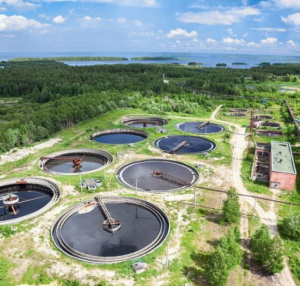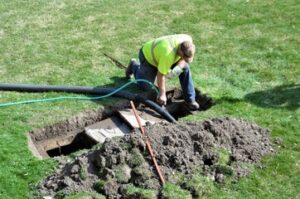Preventive Pest Control St Charles MO is done to keep pests from becoming a problem. This is usually accomplished by removing the pest’s food, water or shelter.

Clean trash cans, avoiding stacks of paper or boxes and removing clogged drains help reduce pest attractiveness. Humid environments also attract pests; fix leaky pipes and regularly empty the rain gutters to reduce moisture around the house.
Pests can cause significant damage to a home, business or garden. They can also introduce dangerous germs and pose health risks. The best way to deal with pest problems is to prevent them from occurring in the first place.
Prevention of pests is possible through sanitation, physical control methods and habitat modification. Sanitation reduces pest populations by removing food, water and shelter. It can also limit the spread of diseases carried by pests. Good sanitation practices include storing food in sealed containers, disposing of garbage regularly and reducing clutter or places where pests can hide.
Physical controls for pests can include trapping and baiting. These can be effective, but require regular inspection and removal of trapped pests. They can also be harmful to pets and children. Habitat modification can exclude pests by modifying an environment to make it unsuitable for them. This can include repairing leaky pipes, closing off vents and putting screens on doors.
Chemical pesticides can also be used to control some pests. But the Environmental Protection Agency requires that pesticides be used sparingly and with caution to minimize their impact on humans, animals and plants. In many situations, it is possible to avoid using pesticides at all by adopting preventive measures.
There are three goals in controlling pests: prevention, suppression and eradication. Prevention is the most important step in Pest Control. It means keeping pests from entering a building or getting into a yard in the first place. It may be as simple as installing screen windows and securing doors, or as complex as caulking cracks, filling holes and covering sewer lines with steel wool.
Suppression focuses on reducing the number of pests to a level that is acceptable. It can be achieved through habitat modification, preventing the establishment of new pest populations and applying appropriate insecticides to existing populations.
Eradication is the most difficult and expensive goal of Pest Control. It involves destroying a pest population completely. It can be accomplished by destroying eggs, larvae and adults with insecticides or by using rodenticides to kill the animals themselves. Eradication is usually done on a large scale by professionals with special equipment and training.
Suppression
Once a pest population has built up to a damaging level, it must be reduced rapidly. Suppression is often combined with prevention as part of integrated pest management (IPM) approaches to pest control.
Natural forces such as weather, predators, parasites, and pathogens can often keep pest populations below damaging levels. Planting pest-free seeds and transplants, scheduling irrigation to prevent excessive moisture or drought, cleaning tillage and harvesting equipment between fields, and using field sanitation procedures can all help reduce the need for chemical suppression.
NMSU’s Integrated Pest Management, or IPM, is a process that incorporates all of the above pest control tactics into one overall plan to achieve long-term pest suppression with minimal risks to people, beneficial organisms, and the environment. Pesticides are applied only after monitoring indicates that they are needed, according to established guidelines, and are made with the goal of removing only the target organism.
Preventive controls are a foundation of IPM, including crop selection and rotation, weed management practices, field sanitation, mechanical controls and barriers, and the use of nematodes and other biological insect control agents. Monitoring and proper identification of pests through scouting and surveys is critical to achieving IPM goals.
Suppression of an existing pest problem is usually accomplished through reducing the average reproduction rate below density-dependence values for that species. This is achieved through reduction in the number of offspring that survive to be adults, or by sterility.
Mechanical and physical control measures kill pests directly or make the environment unsuitable for them, such as traps for rodents. Other control methods such as barriers, screens, radiation, and electricity alter the environment to make it less suitable for the pest.
When pesticides are used, it is important to follow label instructions and personal protective equipment (PPE) guidelines to minimize risk of injury or environmental contamination. PPE includes wearing long-sleeved shirts, pants, closed-toe shoes, face and eye protection, and gloves. It is also necessary to learn effective and safe pesticide equipment cleaning procedures and container disposal techniques. The NMSU pesticides guide provides detailed information on these issues.
Eradication
In some cases, pests pose an immediate threat to humans or their property. For example, they may bite or sting, like bed bugs, spiders and house centipedes; cause allergic reactions or sensitivities, such as cluster flies, wasps and yellowjackets; stain or damage fabrics, foods, crops or plants, such as boxelder bugs, ants, beetles, fleas, pine seed bugs, ticks and mites; or carry and spread diseases, such as rodents (such as rats and mice), cockroaches, flies, fleas, beetles, hornets and wasps; or interfere with natural processes, such as pollination (bees, honeydew and aphids). Pests also can disrupt the ecological balance in a habitat, which can threaten human and animal health, food security and other species.
The term eradication is used to describe efforts to completely remove or destroy a pest, but in practice eliminating any type of pest is usually impossible. In outdoor situations, eradication is rarely attempted; instead, prevention and suppression are the goals. However, in some enclosed areas such as dwellings; schools; office buildings; and health care, food processing and storage, and food preparation environments; eradication is more feasible. Examples include the control of Mediterranean fruit fly, gypsy moth and fire ants.
Pests can be controlled through physical traps and baits, which are designed to catch or poison pests as they come into contact with them. In addition, a variety of chemicals are available to kill or repel particular pests. These chemicals are sometimes called pesticides; however, their use should be limited to trained and licensed professionals, who can ensure that they are used correctly and safely.
Biological pest controls are another option, such as the application of microscopic nematodes to kill or inhibit the growth of unwanted insects in the soil. These nematodes are typically available in granule form and can be applied using a sprayer. However, ensuring that the correct species of nematode is selected and applied is essential to the success of this method, as some species are harmful, while others such as the roach-eating nematode Steinernema carpocapsae, are helpful. Other biological pest control options include cover crops, mulches and composting.
Monitoring
Pest monitoring is checking or scouting to determine what pests are present, their numbers and the severity of damage they’re causing. It’s a key activity in integrated pest management, and it helps to determine when to take control action. Monitoring can be done visually, by trapping or through a variety of other methods including sonic or ultrasonic equipment. Monitoring may also include documenting environmental conditions such as temperature or moisture levels, which can affect pest populations and their behavior.
For example, a lack of rainfall can make weeds more attractive to insects. This can make scouting more difficult, but it’s necessary to ensure that the weed population doesn’t exceed a threshold level, and that any existing controls are working properly.
Monitoring of insect, insect-like, mollusk and vertebrate pests is typically done by trapping or through scouting. Monitoring of weed pests is often done by visual inspection.
Using monitoring devices such as glue boards, multiple catch traps and bait stations can help to assess pest infestation levels and the effectiveness of an IPM program. This can be done on a weekly or monthly basis depending on the level of pest activity in a facility.
A log is important to keep in order to track pest activity through a series of documented observations. This allows you to look back and see if a threshold has been reached, and it can also help to identify hotspots where pest activity is most prevalent.
Many different types of monitors can be used for a wide range of pests, from general insects and rodents to stored product and fabric pests. It’s essential to choose the right device for the job, and a variety of attractants and pheromones can be added or already impregnated in some devices to increase their efficacy.
A pest control professional should be able to recommend the best type of monitoring device for a specific situation. Keeping hand tools on hand like screwdrivers, pliers and caulking guns can be helpful for repairing holes or sealing cracks where pests are likely to enter the building. This can help reduce the need for chemical control and increase the effectiveness of preventive methods.





